Software documentation is a crucial part of working software.
Before we dive deep into this topic, lets adress the question What is Software Documentation so we all are on the same page:
Software documentation is a set of written materials that explain how software works, how to use it, and what features it offers. It helps developers, users, and stakeholders understand and interact with the software effectively.
Whether it’s API documentation, release notes, or customer-facing help content, you can’t afford to skip over the docs when it comes to shipping your new product.
Software documentation is crucial because it can assist users understand how to use your software, it can provide developers and other technical stakeholders with information about the technical aspects of your software, and it can help ensure that the software development process is consistent and repeatable. Additionally, well-written software documentation can help improve the overall quality and user experience of your software.
The thing is, as beneficial as software documentation is, many software engineers and developers tend not to create any documentation for their software projects either due to lack of time, lack of expertise, lack of writing abilities, lack of incentive, or lack of tools and resources. All these factors can make it challenging for developers to create high-quality documentation, and they may instead focus on writing code and developing the software.
“Documentation is one of the most important parts of a software project. However, a lot of projects have little or no documentation to help their (potential) users use the software,” says Eric Holscher, co-founder of Write the Docs.
Luckily, there are examples of software brands leading the way with documentation, and we’re going to take a look at some documentation best practices in this post.
Looking at other software documentation examples can inspire your own project, although your processes will be entirely your own.
Let's get started!
Software Documentation: What it Is
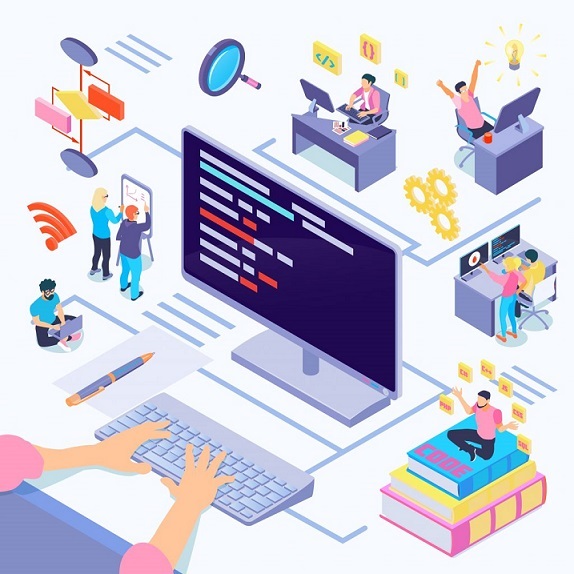
Software documentation is a type of documentation that provides information about software products and systems. It typically includes a wide range of documents and materials that describe the features, capabilities, and use of the software.
Software documentation can be organized into different categories, depending on the intended audience and purpose of the documentation. Some common types of software documentation include user documentation, which provides information that is useful for users of the software; technical documentation, which provides detailed information about the technical aspects of the software; and process documentation, which describes the steps and procedures that are used to develop, test, and maintain the software.
Types of Software Documentation
Software documentation can be broken down into several different categories or types. The types of documentation that you should create for a software system will depend on the audience and the intended use of the software. In general, it is a good idea to create documentation that provides all of the information that users need to effectively use and maintain the software.
For end users, it is often useful to provide user manuals that provide step-by-step instructions for common tasks and that describe the features and capabilities of the software. It is also often helpful to provide tutorials or other types of training materials that can help users learn how to use the software.
For developers and other technical stakeholders, it is often useful to provide reference manuals that provide detailed technical information about the software, such as its API, data structures, and algorithms. It is also often helpful to provide process documentation that describes the processes and procedures that are used to develop, test, and maintain the software.
For system administrators and other IT professionals, it is often useful to provide installation guides that provide instructions for installing and setting up the software on different types of systems. It is also often helpful to provide system documentation that describes the hardware and software components that make up the system, as well as the interactions between those components.
The key to remember is that each documentation type requires a slightly different approach since they are aimed at different audiences.
1. Project Documentation
Project documentation typically refers to the documentation that is created during the development process for a software project. Project documentation is typically intended for use by the development team and other stakeholders, rather than for end users of the software.
Some examples include:
- Technical design documents
- Project plans
- Project requirements specifications
2. Product Documentation
Product documentation is typically used to refer to the documentation that is created for a specific software product. This type of documentation is intended to help users understand and use the software effectively.
Some examples include:
- Instructional manuals
- Reference manuals
- Installation guides
3. Process Documentation
Process documentation is important for software documentation because it provides information about the processes and procedures that are used to develop, test, and maintain the software being created.
This information can be useful because it can help software developers and other technical stakeholders understand the steps that are involved in the software development process, and it can provide guidance on how to follow those steps. Additionally, it can help ensure that the software development process is consistent and repeatable, and it can provide a record of the decisions and actions that were taken during the development process.
Examples of process documentation:
- Development plans
- Testing plans
- Release plans
- Bug tracking reports
4. Technical Documentation
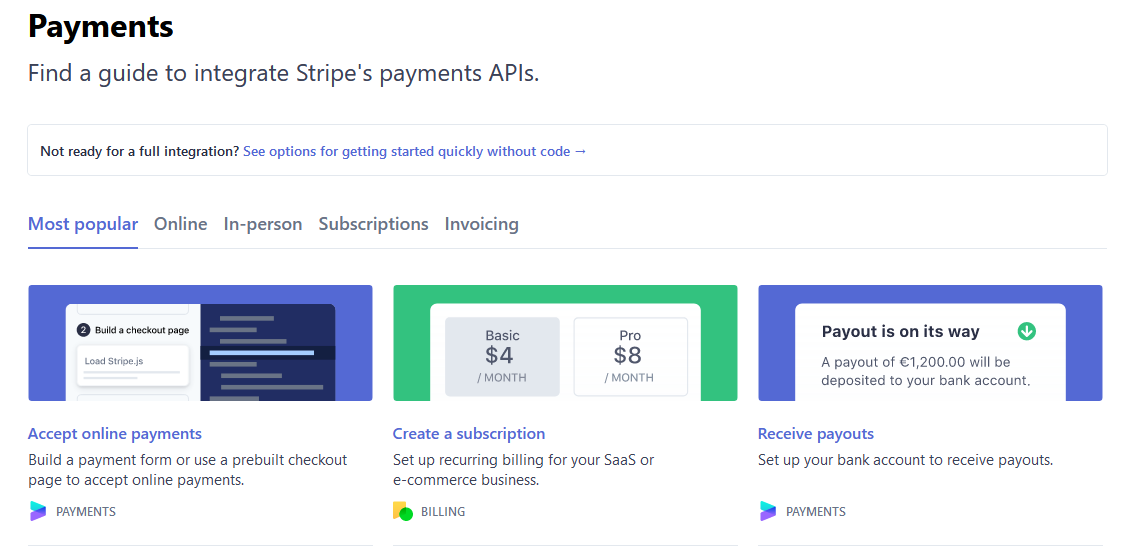
Technical documentation is a type of documentation that provides detailed information about the technical aspects of a product or system. In the context of software documentation, technical documentation typically provides information about the technical characteristics and capabilities of the software such as the software's architecture, data structures, algorithms, and other technical details.
Technical documentation is important for software documentation because it provides detailed information about how the software works and what it can do. This type of documentation is typically created to help developers and other technical stakeholders understand the technical details of the software, and it can provide guidance on how to use the software effectively. Additionally, technical documentation can also be useful for end users of the software, as it can provide information about the features and capabilities of the software, and it can help them understand how to use the software to achieve their goals.
Some examples of technical documentation include:
- API documentation - Reference documentation regarding making API calls and classes
- Data model documentation - Information about the data structures and relationships that are used by the software such as the entities, attributes, and relationships that are defined in the data model as well as examples of how the data model is used by the software.
- Architecture documentation - Overview of the overall design and structure of the software
- User guide - Document that provides instructions on how to use the software
- Release notes - Information describing the latest changes and improvements in a software or feature releas as well as any bug fixes
- README - A high-level overview of the software, usually alongside the source code
5. System Documentation
System documentation is a type of software documentation that provides information about the architecture, components, and design of a software system. It is an important type of documentation because it provides valuable insights into how the software works, and it can help developers, administrators, and other technical stakeholders understand the system and its capabilities.
The main purpose of system documentation is to provide technical information about the software system. This can include things like the system architecture, the components and modules that make up the system, and the design principles and patterns that were used to build the system. By providing this information, system documentation can help developers and other technical stakeholders understand how the system is organized, how it works, and how it can be extended or modified.
Additionally, system documentation can provide useful information for users who want to learn more about the system, or who want to understand its capabilities and limitations. For example, system documentation can provide details about the system's features and capabilities, as well as information about how to use the system and troubleshoot common issues.
Some examples include:
- Troubleshooting guide - provides information that is useful for users who want to troubleshoot common issues or problems with the system
- Architecture documentation - provides information about the architecture of the system, including the components and modules that make up the system, and the relationships between them. (Architecture documentation can also be part of any technical documentation created as we mentioned above).
-
User manual - useful for users who want to learn how to use the system. It can include step-by-step instructions and examples, as well as information about the system's features, capabilities, and limitations.
6. User Documentation
User documentation, as the name suggests, is focused on providing information that is useful to end users of the software. User documentation is intended to help users understand how to use the software, and it is typically written in a clear, concise, and easy-to-understand style.
Some examples include:
- How-to guides – Problem-oriented, take the user through a series of steps to reach a real-world goal
- Tutorials – Learning-oriented, take the user through a series of steps to learn a concept
- Reference docs – Information-oriented, technical descriptions of the software (could include software design documents)
- Explanations – Understanding-oriented, they clarify or illuminate a particular topic for a user
Benefits of Creating Software Documentation
Creating software documentation can provide a number of benefits. Some of the key benefits of creating software documentation include:
1. Improved User Experience
Software documentation can help users understand how to use the software, and it can provide information that users need to achieve their goals. This can improve the overall user experience of the software, and it can help users get the most value out of the software.
2. Enhanced Collaboration
Software documentation can help developers and other technical stakeholders understand the technical aspects of the software, and it can provide information that they need to work on the software. This can enhance collaboration among team members, and it can help ensure that everyone is working towards the same goals.
3. Increased Efficiency
Software documentation can provide clear, consistent, and up-to-date information about the software, and this can help developers and other technical stakeholders work more efficiently. For example, developers can use the documentation to quickly find the information they need, and they can avoid having to spend time trying to reverse-engineer the code or figure out how the software works.
4. Improved Quality
Software documentation can help ensure that the software development process is consistent and repeatable, and it can provide a record of the decisions and actions that were taken during the development process. This can help improve the overall quality of the software, and it can help prevent errors and mistakes.
How to Write Effective Software Documentation
There are several steps you should take if you want to create software documentation that is accurate, useful, and easy to understand.
Here are the following best practices we follow at Helpjuice when looking to write software documentation.
1. Prioritize Documentation in the Development Process
This may seem obvious, but as we mentioned earlier, software documentation may fall under the radar due to developers not seeing the value of documentation or not having enough time or expertise to create high-quality documentation. Additionally, because some organizations may not have established processes or guidelines for creating and maintaining software documentation, it can make it challenging for developers to create and update the documentation.
This is why it's the first step to writing effective software documentation is to prioritize it during the software development lifecycle!
Don’t allow developers to ship a feature unless it is accompanied by the appropriate documentation.
Hire technical writers who can promote the value of documentation within your company.
Invest in the right tools to make it easy for your development team to create the necessary documentation.
Whatever the case, it's important that you get everyone on the same page and explain the benefits of creating software documentation. By understanding the value of software documentation, developers and other technical stakeholders can make informed decisions about how to prioritize it in the development process.
2. Identify Your Target Audience
It is important to identify your target audience when creating software documentation because its your readers who will determine the content and style of the documentation. Different audiences will have different needs and expectations when it comes to software documentation, and it is important to understand those needs and expectations in order to create effective documentation.
For example, if your audience for the documents you're looking to write is end users of the software, the documentation should be written in a clear and concise style, and it should provide step-by-step instructions for common tasks. It should also provide information about the features and capabilities of the software, and it should include examples and exercises to help users learn how to use the software.
On the other hand, if your audience for the software documentation you're creating are developers or other technical stakeholders, the documentation should provide detailed technical information about the software, such as its API, data structures, and algorithms. It should also describe the processes and procedures that are used to develop, test, and maintain the software.
The Splunk Documentation Team provides an in-depth guide in their book The Product is the Docs on how to define your audience for technical writers.
Here’s a quote from Splunk: “Reliable and accessible documentation requires thorough product knowledge. It also applies equally, if not more, on knowing your audience.” – Splunk, p.275
This is an exercise that is useful not just for technical writers but also for other members of your company, including marketing, engineering, product, and support.
- Define your user. You can start with available user information and talk to customer-facing teams like support.
- Identify your user’s goals (e.g., install a database).
- Create audience personas.
- Create audience definitions (e.g., entry-level admin audience).
- Create use cases for the product (e.g., manage enterprise customers in a CRM system).
- Identify the correct delivery formats for your users (e.g., FAQ, wiki, or knowledge base).
- Create content that is an appropriate scope and at the right level of detail.
- Identify appropriate users to provide feedback on your documentation.
- Conduct user research and communicate with users.
Remember, your software users may change over time. Repeat this exercise at least once a year.
3. Define the Scope and Goals
Once you have identified the audience, the next step is to define the scope and goals of the documentation. This can help you focus on the most important information and ensure that the documentation is relevant and useful. For example, you may want to focus on specific features or use cases, or you may want to provide information that is needed to complete specific tasks.
4. Develop a Content Strategy
The next step is to plan how you will go about actually creating the necessary software documentation to meet the scope and goals of the previous step as well as who will be responsible for maintaining the documentation. This can involve establishing a schedule for creating and updating the documentation, as well as identifying the tools and resources that will be needed. The plan can also include a process for reviewing and revising the documentation, to ensure that it is accurate and up-to-date..
A documentation content strategy helps you keep on track, allocate resources, and manage your time. It will help you time your documentation alongside releases so you can have some idea of what’s coming up.
5. Create a Style Guide
Just like you would create a style guide for your content marketing activities, you should consider having a style guide for your software documentation.
Having a style guide can be helpful for a number of reasons.
- It can help ensure consistency in the software documentation process. By following a set of standardized rules and guidelines, writers can avoid using conflicting or inconsistent styles, which can make the documentation more difficult to read and understand.
- A style guide can help establish a clear and coherent tone for the documentation you write. By using a consistent style and tone, writers can make the documentation more engaging and easier to read.
- It can help improve the overall quality of any software documentation you create. By following a set of standardized rules and guidelines, writers can avoid common errors and mistakes, and they can create documentation that is more accurate and useful.
Some things to consider including in your software documentation's style guide include:
- Standardized terminology (how to refer to your company and software)
- Voice & tone
- Page formatting (use of headers, paragraphs, lists)
- Guide on word choice (should it be internet or Internet – obviously the former!)
- Use of visuals and video
You can refer to some well-known software style guides from companies like IBM or Microsoft.
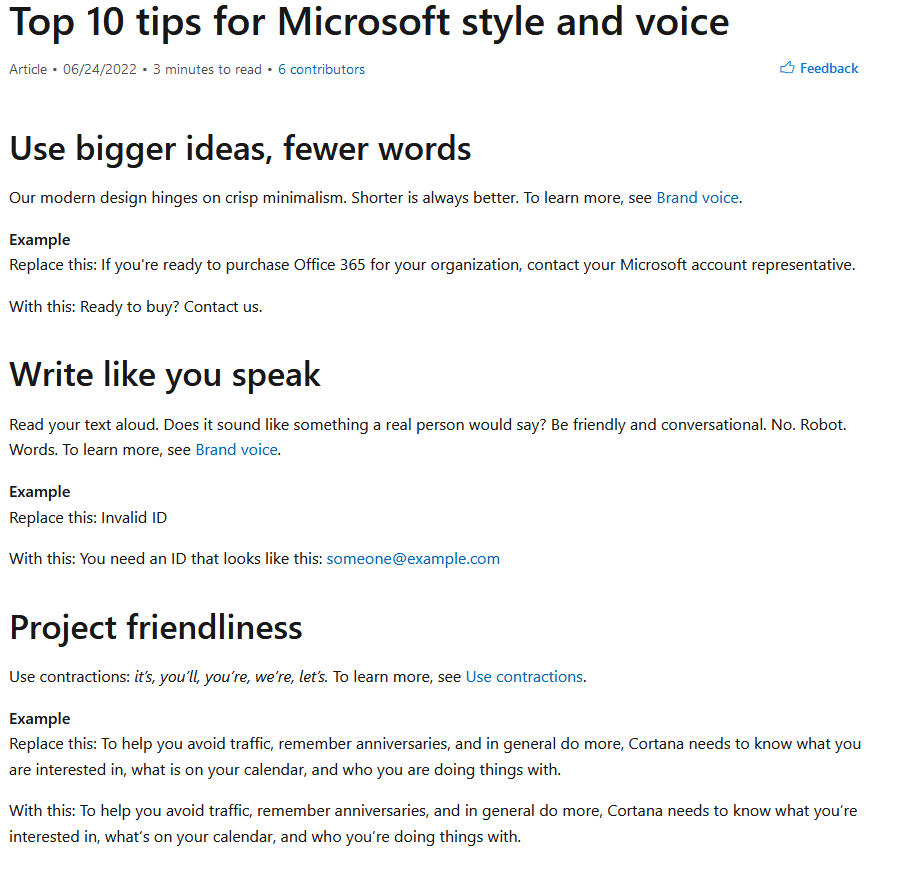
For advice on grammatical choices, such as whether to use the Oxford Comma, you can check standard style guides such as the Chicago Manual of Style.
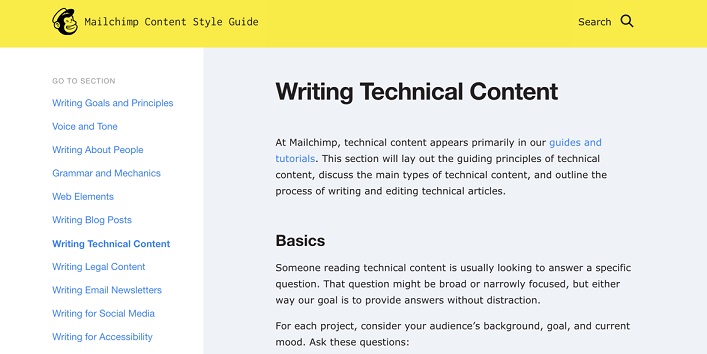
(Source)
6. Write Clearly and Concisely
You've most likely come across the acronym KISS (Keep It Simple, Stupid). This principle should be applied when writing your software documentation.
When writing the documentation, it is important to focus on clarity, conciseness, and organization. Use clear, simple language, and avoid using jargon or technical terms unless they are necessary. Use headings, subheadings, and other formatting techniques to organize the documentation, and provide examples and images to help illustrate key concepts.
7. Review and Revise
Your customers should not be the first testers of your documentation, or you have failed to provide working docs.
This is why documentation should not be published until it has been subject to technical verification, which is the point where you should review your documentation to ensure that it's accurate as well as up-to-date and revise as needed.
To review and revise software documentation, it is important to involve other stakeholders who can provide valuable feedback and suggestions. This can include developers who are familiar with the software, as well as users who can provide insights into how the documentation can be improved.
Gathering feedback from users who have actually used the software can help identify gaps or errors in the documentation, and it can help improve the overall quality of the documentation. Have anyone who reviews the documentation check it for factual errors, ensuring that it is consistent with the current version of the software, and verifying that it covers all of the important features and use cases. You'll then want to consider incorporating any of the feedback or suggestions you receive to update the documentation as appropriate.
Once the documentation has been reviewed and revised, it is important to continue to review and update the documentation on a regular basis. This can help ensure that the documentation remains accurate and useful, even as the software evolves and changes over time.
Additional Best Practices for Writing Software Documentation
You will need to consider the user experience (UX) of your documentation, especially customer-facing help content.
Just writing the content is half the battle – how do end users feel when they actually read your documentation? Does it help them to achieve the goal they set out to achieve when reading your documentation? Are they able to easily find what they need?
Take a look at the following best practices for ensuring that your software documentation is useful and actually read by your target audience.
1. Keep the Documentation Up-To-Date
Software systems are constantly changing, and the documentation should be updated to reflect those changes. This will help ensure that the documentation remains accurate and useful.
2. Make Use of Visuals
Visual aids, such as images, diagrams, and videos, can be an effective way to illustrate concepts and ideas, and they can help make your software documentation more engaging and easier to understand which is particularly helpful for new users who are learning how to use your software.
3. Include Examples and Exercises
Providing examples and exercises can help users learn how to use the software more effectively.
4. Use a Consistent Structure and Format
This will help users find the information they need, and it will make the documentation easier to read and understand.
5. Consider Hiring Professional Technical Writers
There’s nothing wrong with your developers writing documentation if necessary, but it the quality of your documentation might greatly improve if you make use of professional technical writers. Technical writers are professionals who specialize in creating clear, concise, and accurate documentation for technical products and systems. They have the knowledge, skills, and experience to create high-quality documentation that is useful, easy to understand, and up-to-date.
You can outsource your technical writing needs to a BPO vendor or hire an in-house expert to create technical documentation for your products or systems.
6. Inclusivity and Accessibility
When you get to a certain point in your documentation, you need to seriously consider how people with different needs will be able to use your documentation.
For example, consider whether your users are from international audiences when actually writing content. You want to avoid the use of idioms and references that they might not understand.
Accessibility relates to the User Experience of the documentation tool itself. For example, consider whether it will be accessible to a person using a screen reader, which will read the test aloud to a person using it.
Images with text overlaid are not accessible, so think about your screenshots and make sure they have accompanying text.
Take into consideration the contrasting colors of your knowledge base design, and how you style links, to ensure other users with visual impairments can engage with your site successfully. Take this example from Write the Docs' website:
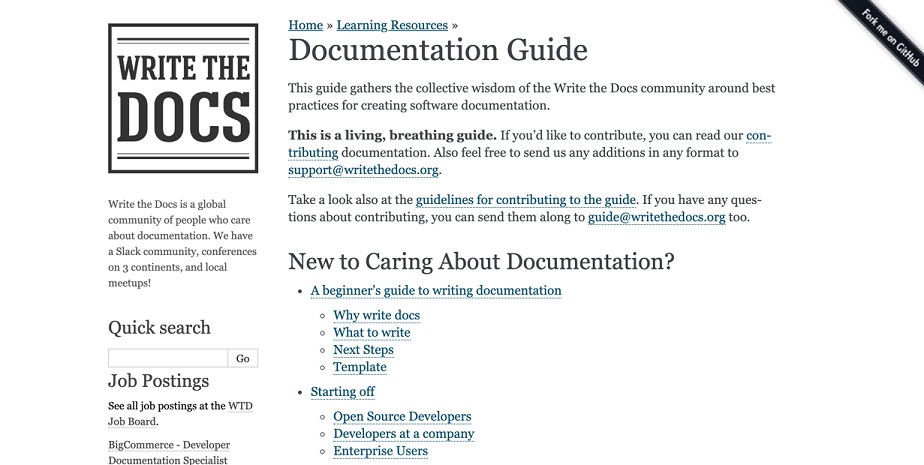
The site design is very clear, easy to use, with underlined links and short paragraphs. The black and white color scheme provides a high contrast for visually impaired users.
Continuous Improvement
Documentation is never done, and you’ll always have to iterate on your efforts. Set time aside to review the documentation, identify missing documentation, or improve documentation that is frequently used.
This relates to the customer feedback loop. Quickly act on comments from your customers that tell you your documentation is failing to solve a problem.
Make the time to talk to your support agents about what documentation they might find useful, and even empower them to create it themselves!
7. Content Discoverability
Consider how customers arrive at your knowledge base in the first place. Very few customers will consider your knowledge base as a whole, and hardly anyone will arrive at your carefully constructed homepage.
Consider Every Page is Page One principles as described by Mark Baker. According to EPPO, people “forage” for information like animals searching for food, rather than learning in a linear fashion as you would with a book.
There is no “beginning" to start from.
Mark says: “There is no “Start Here” page for the Web. Wherever you dip your toe into the Web, that is your page one. We can’t avoid this. Whether you are a reader or a writer, and whether you like it or not, that is the way the Web works. Every page is page one.” 1
Your software documentation is no good if nobody can find it, but there are a number of ways to promote your content. In fact, Google’s search engine is often “page one” for many users.
The best knowledge base should be indexable by search engines, with all the correct meta tags. You should also link to your documentation from your software app, since this is where users will naturally get stuck.
If possible, make use of contextual help which is served up whenever customers need it.
For example, if customers are having trouble with their billing, ensure a link takes them to a page with billing documentation that can help solve their problem.
Here’s an example of contextual help inside Slack:
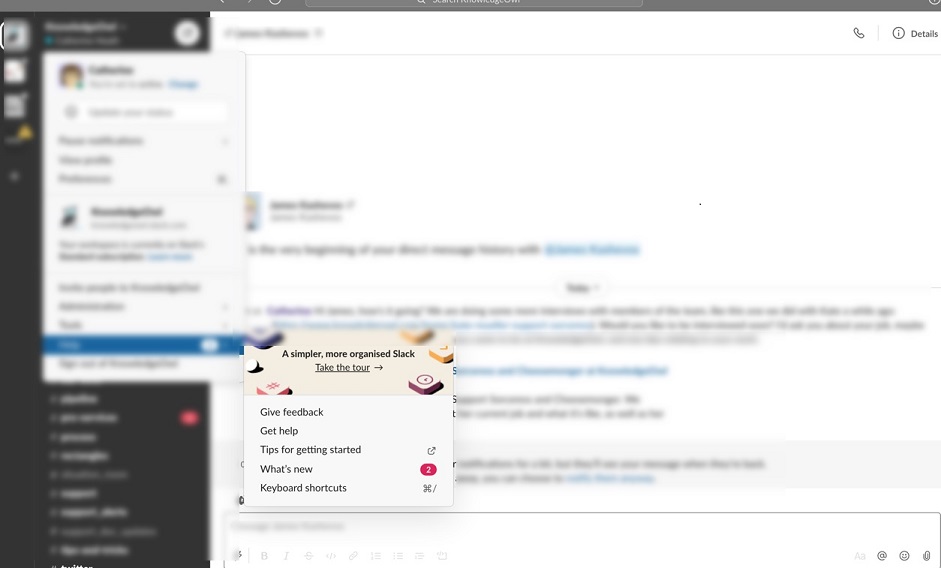
Using Software Documentation Tools
Software documentation tools are specialized tools that are designed to help developers, technical writers, and other stakeholders create, organize, and manage software documentation. There are several reasons you should consider making use of specialized tools when creating your software documentation including:
- Automation: Software documentation tools can help automate some of the repetitive and time-consuming tasks that are involved in creating software documentation. For example, many software documentation tools can automatically generate documentation from source code, or from other types of structured data.
- Collaboration: Software documentation tools can provide tools and features that make it easier for teams to collaborate on software documentation. For example, many software documentation tools provide version control, review and approval processes, and other features that can help teams work together effectively.
- Accessibility: Software documentation tools can make it easier for developers, users, and other stakeholders to access and use the documentation. For example, many software documentation tools provide online documentation portals, search tools, and other features that can help users find the information they need quickly and easily.
There are several different types of software documentation tools that you can use when creating software documentation. Some examples of types of software documentation tools include:
- Source code documentation tools: These tools are designed to help developers automatically generate documentation from source code. They can parse the source code, extract comments and other documentation, and generate organized, structured documentation in a variety of formats.
- Collaborative documentation tools: These tools are designed to help teams collaborate on software documentation. They can provide features such as version control, review and approval processes, and online collaboration tools that can help teams work together effectively.
- Knowledge management portals: These tools are designed to help users access and use the documentation. Additionally, they can provide search tools and other features that can help users find the information they need quickly and easily.
- Knowledge management tools: These tools are designed to help organizations manage their knowledge assets, including software documentation. They can provide features such as document management, search and retrieval, and content management that can help organizations organize, manage, and access their software documentation.
- Technical writing tools: These tools are designed to help technical writers create and manage software documentation. They can provide features such as document templates, writing aids, and content management that can help technical writers create high-quality, organized, and consistent documentation. In addition to tooling, communities and training platforms like Technical Writer HQ help technical writers deepen their skills, stay current with documentation best practices, and find real-world examples they can adapt for their own software docs.
- Source code repositories: These tools are designed to help developers and technical writers manage their source code and other development artifacts, and they can provide many features such as version control and collaboration features that are useful for managing software documentation.
How a Knowledge Base Can Help With Your Software Documentation
A knowledge base can be useful for your software documentation because it can provide a centralized, organized, and accessible source of information about your software. For example, a knowledge base can provide a consistent and user-friendly way for end users to access your documentation, and it can help users quickly find the information they need.
Additionally, a knowledge base can be a useful tool for organizing and maintaining your documentation. For example, a knowledge base can provide a structure and a process for creating, reviewing, and updating your documentation, and it can help ensure that your documentation is accurate, up-to-date, and consistent.
Some features that knowledge base software typically comes with to help with creating effective software documentation that gets read includes:
- Search features. A knowledge base typically provides search and retrieval tools that can help users find the information they need quickly and easily.
- Version control. A knowledge base can help ensure that the documentation is always accurate and up-to-date by providing tools that can manage different versions of the documentation.
- Analytics. Knowledge base software can come with analytics that can track user behavior, such as the number of users who access the documentation, the types of information that users are looking for, and the success rate of finding what they're looking for. This can help organizations understand how the documentation is being used, and it can help them improve the documentation to make it more useful for users.
Final Remarks
This has been a lot to take in! Feel free to refer back to this guide as you develop your software documentation strategy and start reaching new heights of user success.
Remember that good documentation practices are just as important a part of the software as the actually source code itself. Make sure to prioritize the documentation process into your overall development process to ensure that software documentation is being created and that it's useful.
As part of the process of enabling users to access and make use of your software documentation, you'll want to find the right tools to help with the creation process.
This is where Helpjuice's knowledge base software can help. As we mentioned, a knowledge base can be a fantastic tool for creating, organizing, and distributing your software documentation. Try a 14-day free trial of our software and see how easy it is to manage and share any software documentation your organization creates.
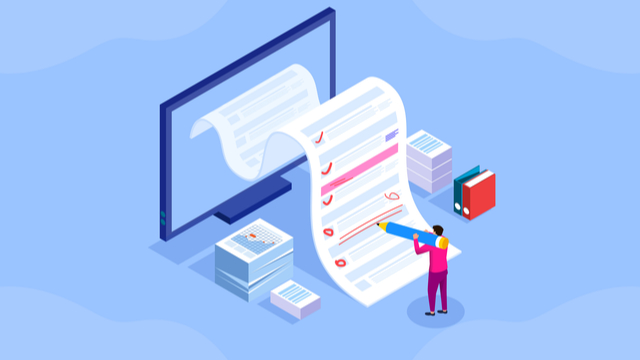
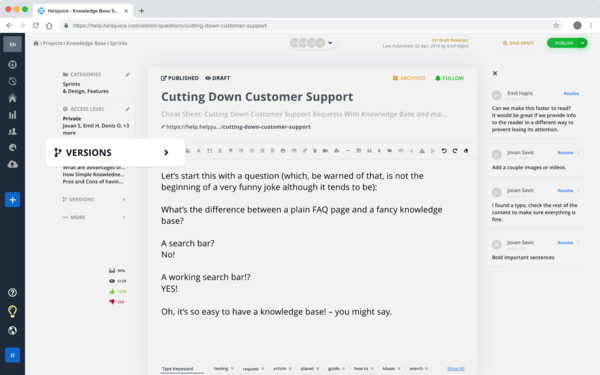
![The Best Knowledge Management Software & Tools [2025]](https://static.helpjuice.com/helpjuice_production/uploads/upload/image/4752/direct/1576239609895-1569878329114-Knowledge%20Management%20Software.png)